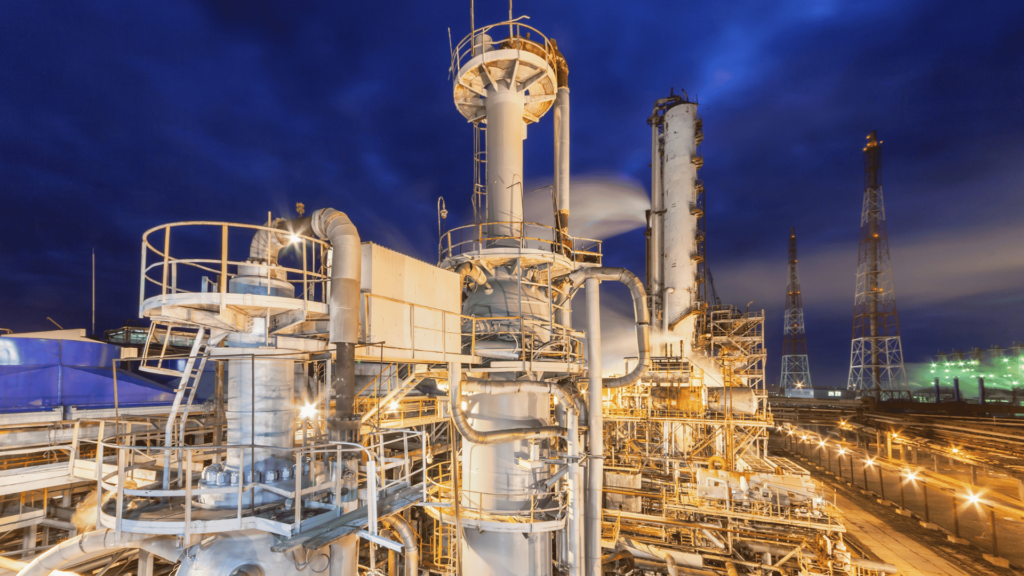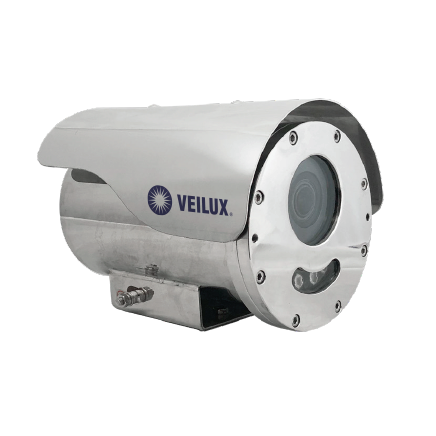Intrinsically safe cameras for hazardous locations are essential in industries where the risk of combustible gases, dust, or chemicals is present, having the right equipment can mean the difference between safety and disaster. Intrinsically safe cameras are designed to operate in hazardous environments without igniting flammable substances, ensuring the protection of both workers and facilities. Whether you’re in the oil and gas industry, working with volatile chemicals, or managing grain storage, surveillance equipment must meet stringent safety standards, not just deliver high-quality images.
In this guide, we’ll explore what makes a camera intrinsically safe, how it differs from explosion-proof models, and why Veilux cameras stand out as the trusted choice for high-risk industries.
🔍 What Is an Intrinsically Safe Camera?
An intrinsically safe camera is specifically engineered to function in hazardous environments without posing a risk of sparks, heat, or electrical faults that could ignite nearby flammable substances. These cameras are built with safety features that limit the energy output to prevent the initiation of an explosion, even if a malfunction occurs.
This differs from explosion proof cameras, which are designed to contain internal explosions, keeping them from igniting the surrounding environment. While both types of cameras offer critical safety features, intrinsically safe cameras go a step further by preventing ignition at the source.
⚠️ Intrinsically Safe vs. Explosion Proof Cameras
A common misconception among industrial buyers is the interchangeable use of the terms “explosion proof” and “intrinsically safe.” While both are important safety features, they serve different purposes:
- Explosion proof cameras: : These cameras are enclosed in heavy-duty casings designed to withstand and contain an internal explosion, preventing any harmful impact on the surrounding environment.
- Intrinsically safe cameras: These are designed to eliminate the risk of ignition altogether. They are built to ensure low energy output, reducing the likelihood of creating sparks or excessive heat that could trigger an explosion.
For industries operating in Zone 0 or Class I, Division 1 locations, intrinsically safe cameras are typically the required solution to comply with safety standards.
🏭 Industries That Require Intrinsically Safe Cameras
Intrinsically safe cameras are crucial in environments with high risks of combustible materials. Key industries that rely on these cameras include:
- Oil and Gas Facilities: Refineries, pipelines, and offshore rigs, where flammable gases are ever-present.
- Chemical Processing Plants: Plants handling volatile chemicals or compounds that can ignite easily.
- Grain Storage and Milling Operations: Where dust can easily become combustible, posing a significant explosion risk.
- Pharmaceutical and Food Manufacturing: Facilities that use flammable solvents in production processes.
- Mining and Energy Sectors: In underground mines or energy sectors where combustible gases are a constant concern.
These industries must adhere to strict safety standards such as ATEX, IECEx, and OSHA, and intrinsically safe cameras play a vital role in maintaining compliance.
✅ Design Standards for Intrinsically Safe Cameras
To meet the requirements for hazardous environments, intrinsically safe cameras must adhere to rigorous design standards and certifications, including:
- Temperature ratings (T4 or higher): Ensuring the camera operates within the specified temperature ranges without overheating.
- Low voltage and current circuitry: Preventing sparks or heat from electrical components.
- IP66 or IP67 ratings: Offering protection against dust and water ingress, essential for harsh environments.
- Corrosion-resistant housing: Ensuring the camera can withstand challenging environmental conditions.
- Global certifications: Including ATEX, IECEx, UL, CSA, and FM to guarantee compliance with international safety standards.
These features ensure that intrinsically safe cameras can operate safely, even in environments where a single spark could lead to catastrophic results.
In high-risk environments, Veilux provides trusted, intrinsically safe cameras that protect your team and facility, backed by global certifications and proven performance.
🔒 Why Choose Veilux Intrinsically Safe Camera Solutions?
Veilux is a trusted leader in providing high-performance, intrinsically safe camera systems tailored for hazardous environments. Our cameras are designed to meet the demanding needs of industries where safety and reliability are paramount. Here’s why Veilux stands out:
- ✅ Certified for hazardous areas: Veilux cameras are certified for use in Zone 1/2 and Division 1/2 environments, ensuring compliance with safety regulations.
- ✅ Rugged design: Our cameras are built for harsh conditions, offering weatherproof and corrosion-resistant housings.
- ✅ Seamless integration: Veilux cameras can be easily integrated with SCADA and VMS systems for centralized monitoring.
- ✅ High-quality video: Capture HD or infrared video, even in low-light conditions, for round the clock surveillance
- ✅ Comprehensive support: We offer extensive documentation, warranties, and compliance consulting to ensure your system meets all necessary safety standards.
When safety is non-negotiable, Veilux delivers reliable, intrinsically safe video monitoring backed by real world performance. check out our checklist
📄 Download the Intrinsically Safe Camera Certification Checklist
Not sure what features or certifications your project needs?
Download our free Intrinsically Safe Camera Certification Checklist to ensure your next camera purchase meets all safety and compliance requirements.


